Client Objective: A Modern Altar Rooted in Tradition
A historic church faced a unique challenge: they needed to replace their aging altar with a new one that preserved the visual essence and intricate craftsmanship of the original while allowing for updates in functionality.
To bring this vision to life, the church partnered with a renowned woodworking firm. The task at hand? Replicate the beauty and ornate details—especially the delicate grapevine borders—of the original altar without dismantling or damaging it. To achieve this, the woodworking firm brought in V3D Technologies for their expertise in high-accuracy laser 3D scanning and scan-to-CAD reverse engineering.
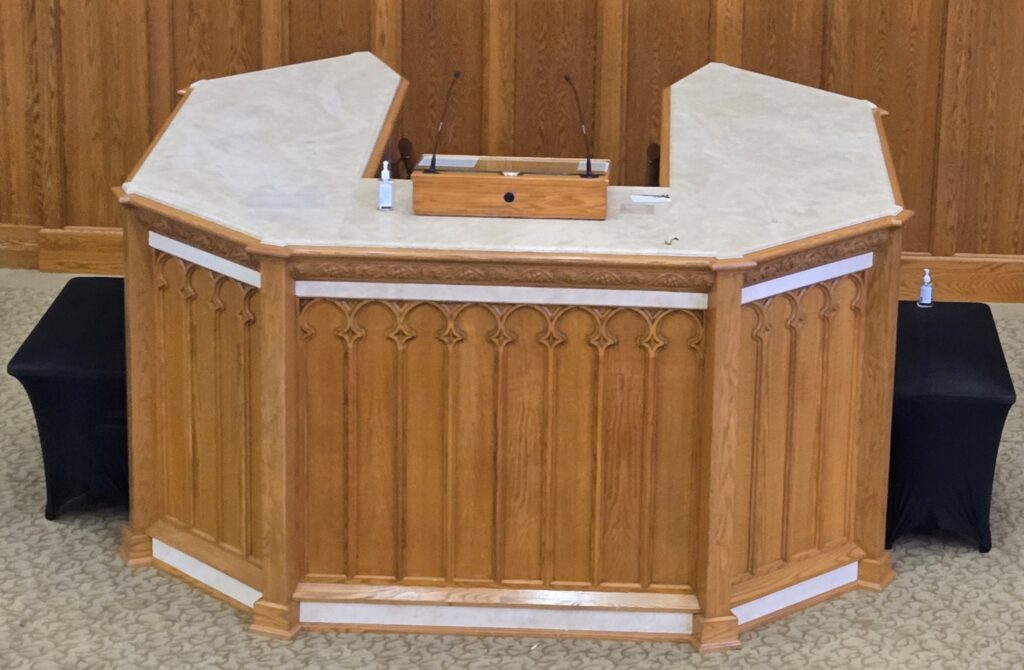
Church Altar (front)
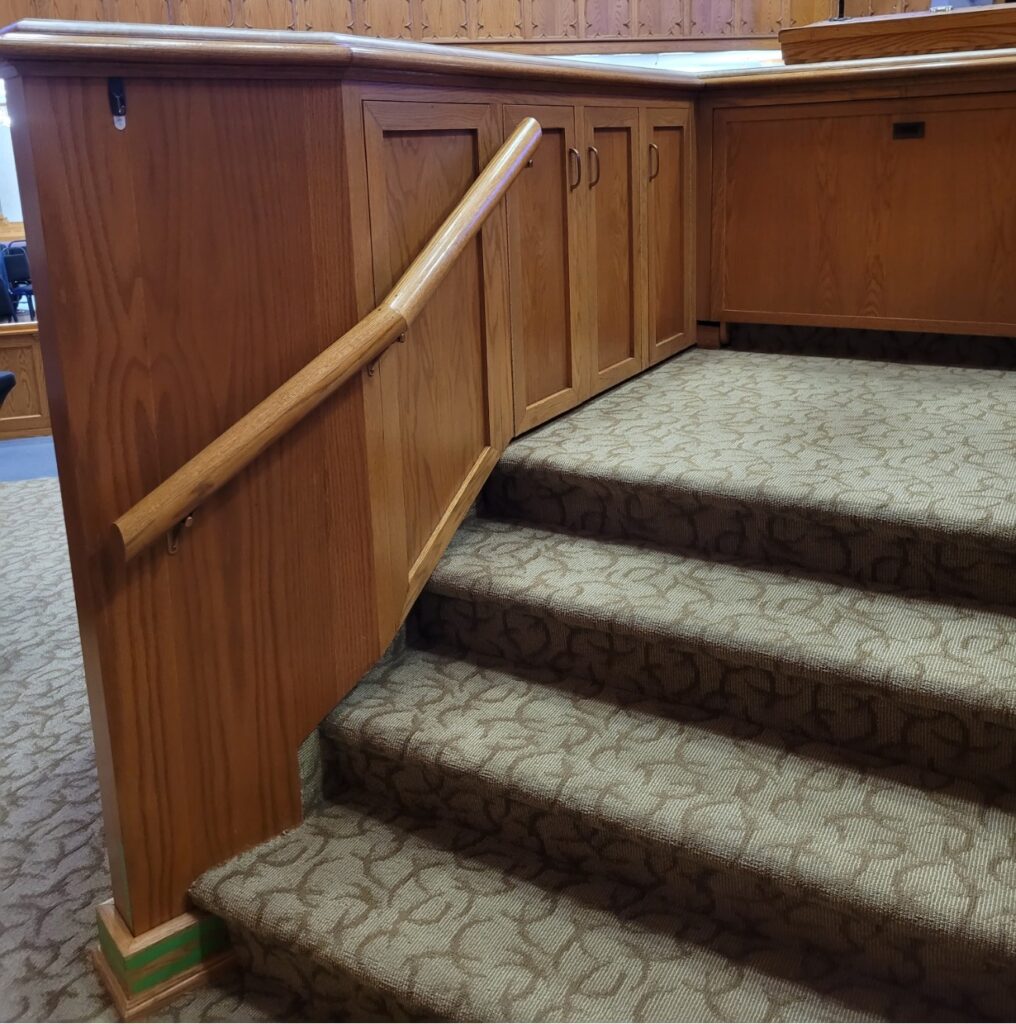
Church Altar (back)
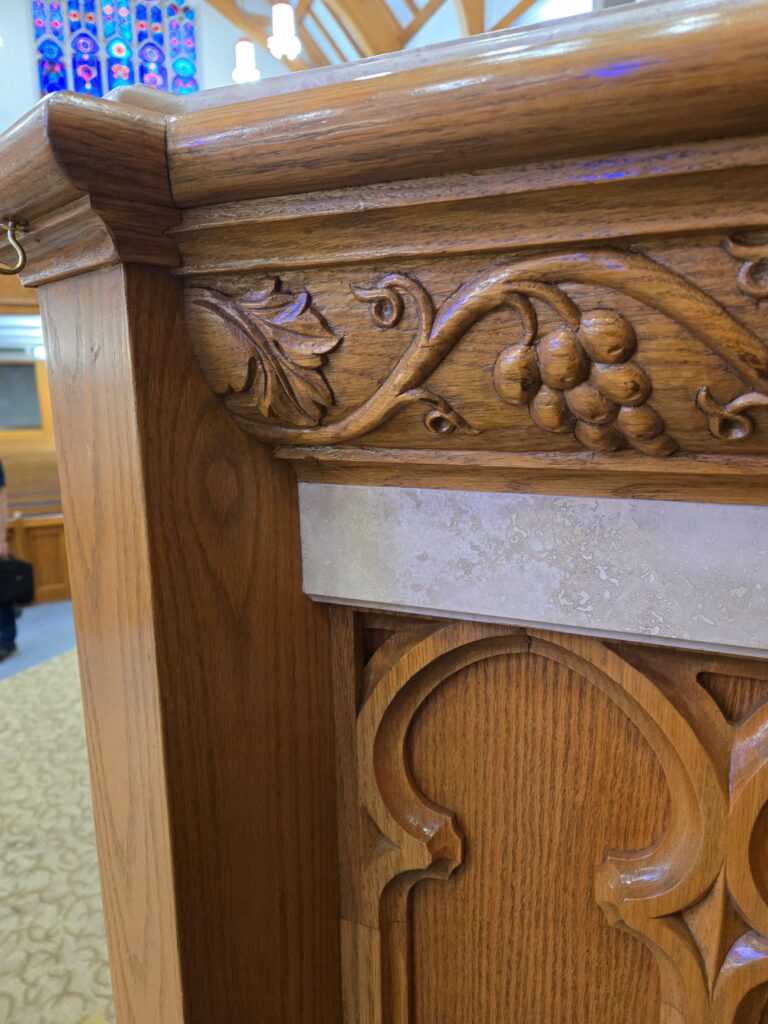
Grapevine Border in existing Altar
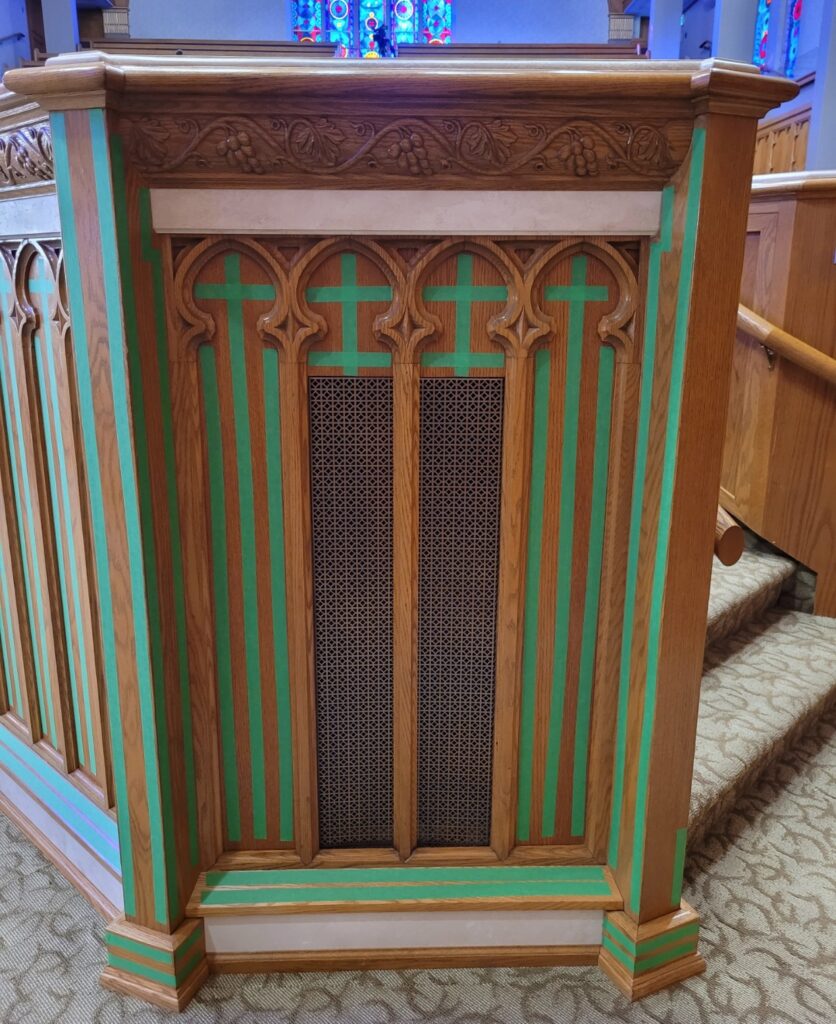
Grapevine Border & Metal Mesh in existing Altar
(scanning targets were placed on green masking tape to protect surface of altar)
Our Solution: High-Fidelity Digital Twin with 3D Laser Scanning
V3D Technologies deployed a portable, hand-held 3D Laser Scanner known for its high local and volumetric accuracy. This scanner was crucial in capturing both the structure and the fine handcrafted elements of the altar, including the grapevine borders and metal mesh.
To protect the surface during scanning, we applied masking tape and affixed 3D Scanning Positioning Targets on the masking tape. The targets enabled accurate alignment and ensured the generation of a precise, high-resolution digital twin (polygon model) of the altar.
Highlights of the digital twin polygon model included:
- Detailed capture of complex organic shapes such as grapevine carvings
- Preservation of delicate textures and ornamental elements
- Full 360° scanning, including back-facing details like steps, brackets, and handrails
See images below for details.
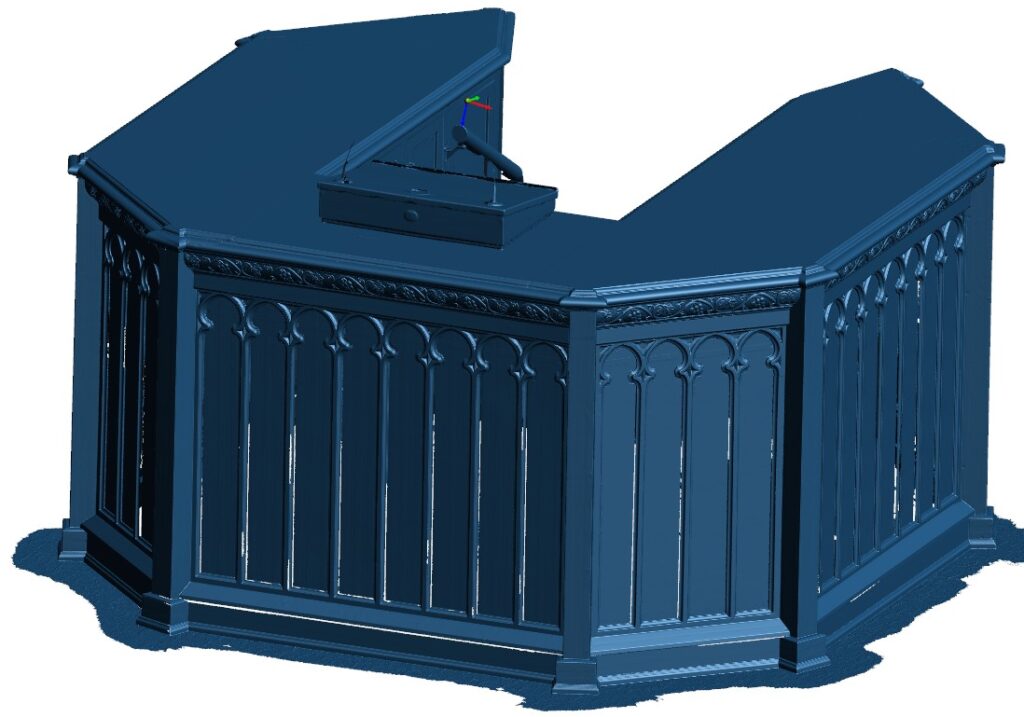
Polygon Model (scanned mesh) of Church Altar
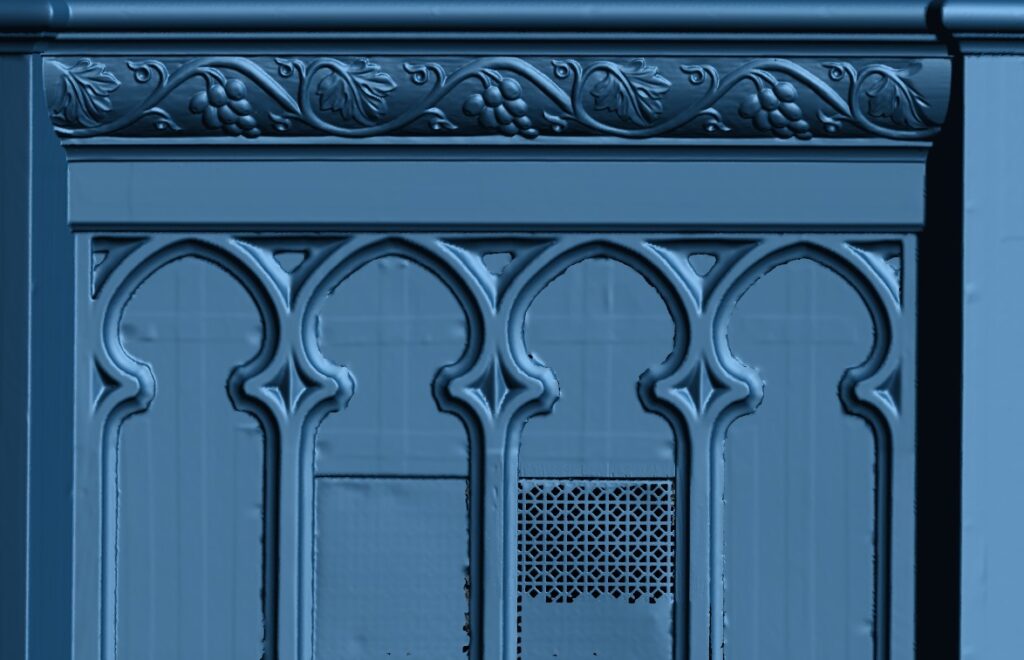
Polygon Model (scanned mesh) of Altar capturing Grapevine Borders and Metal Mesh
(2x mesh resolution used for grapevine and 4x mesh resolution used for metal mesh)
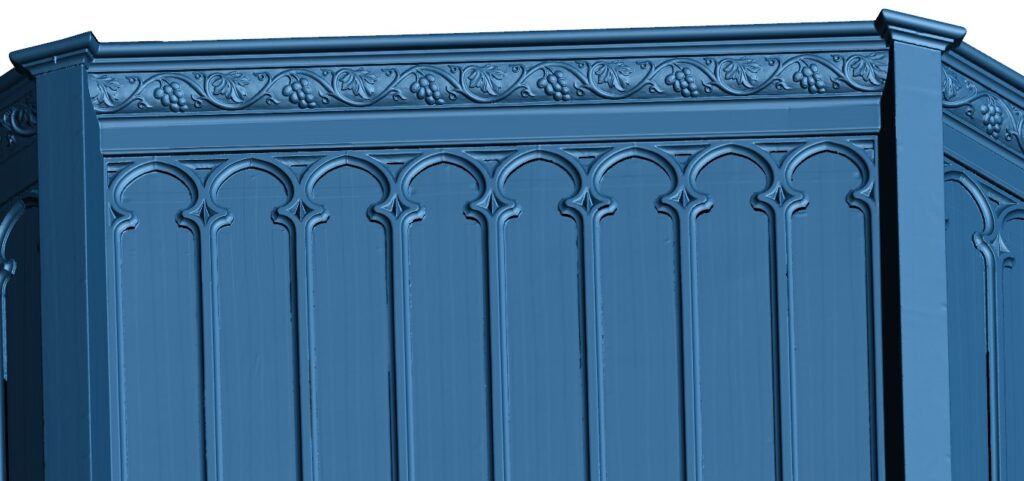
Polygon Model (scanned mesh) of Altar capturing Ornamental Shapes & Grapevine Borders
From Scan to CAD: Crafting the Blueprint for Reproduction
The detailed polygon mesh was processed in advanced Scan to CAD Reverse Engineering software to create a precise CAD model. The altar’s structural components were reconstructed using cross-sectional data, feature by feature.
For the intricate grapevine borders, we employed NURBS modelling, allowing us to digitally recreate the organic forms with exceptional accuracy. The final CAD model was a hybrid of parametric and freeform modelling, combining technical precision with artistic fidelity.
Key CAD outputs included:
- The complete altar body, including cabinetry and steps
- Custom elements such as doors, handles, handrails and brackets
- High-resolution models of the grapevine borders and metal mesh
Validation was performed using deviation heat maps comparing the scan and CAD model, confirming that the recreated model remained true to the original design within acceptable tolerances.
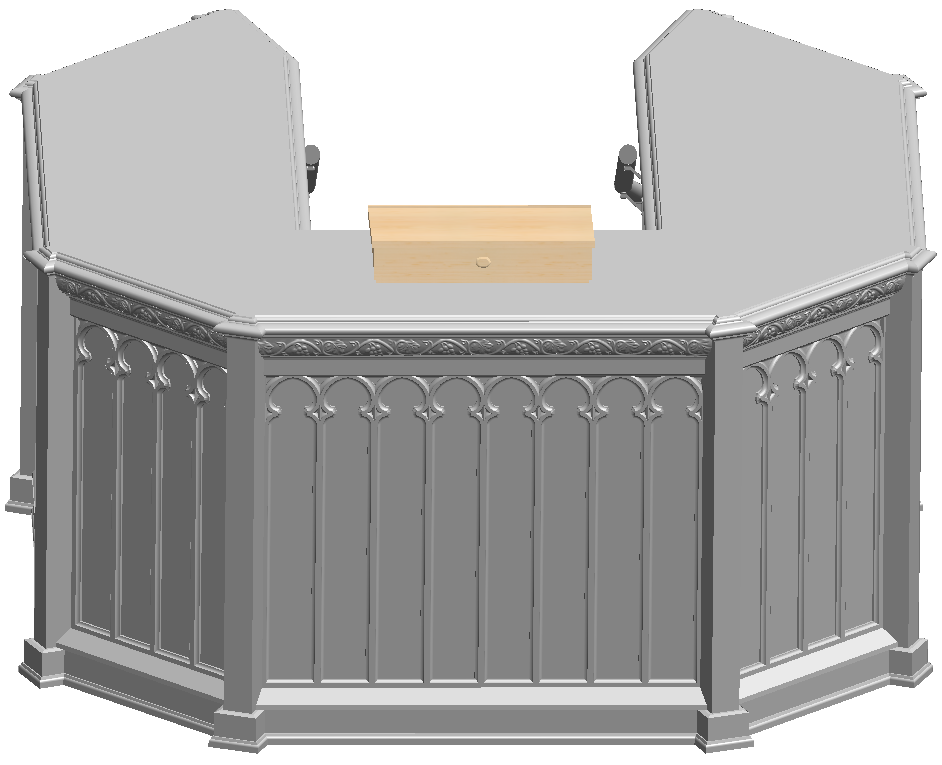
CAD Model of Church Altar
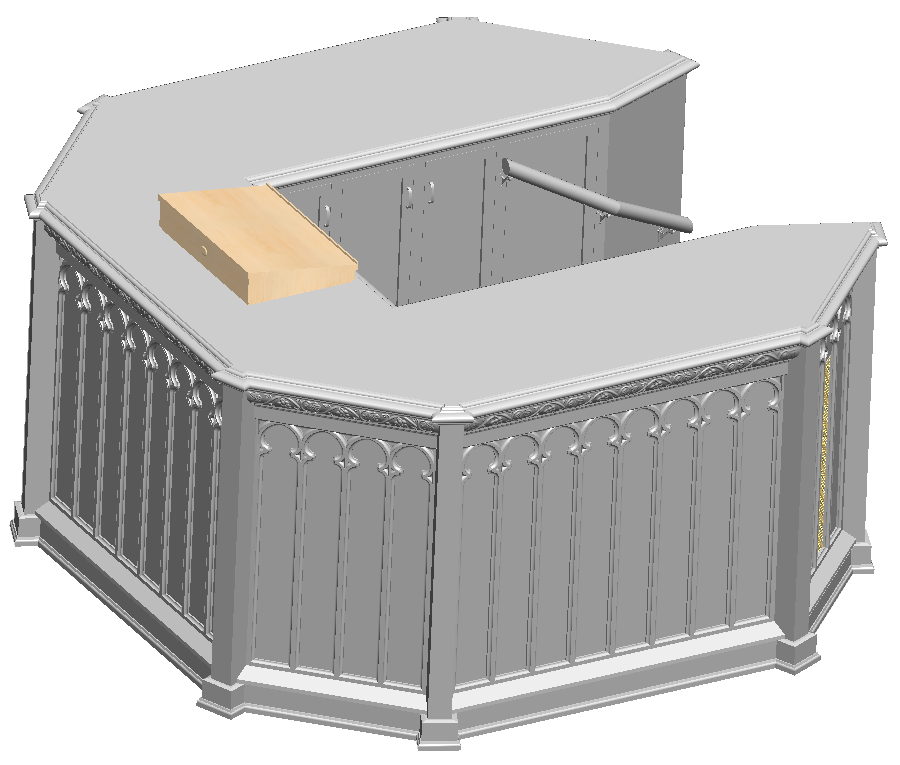
CAD Model of Church Altar
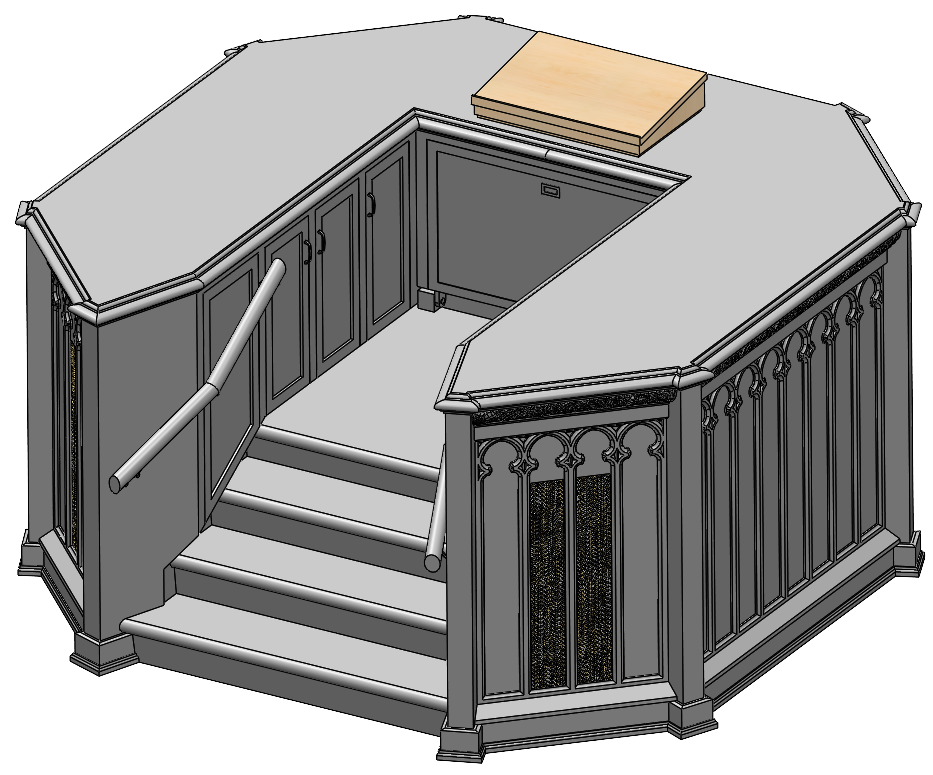
CAD Model of Church Altar
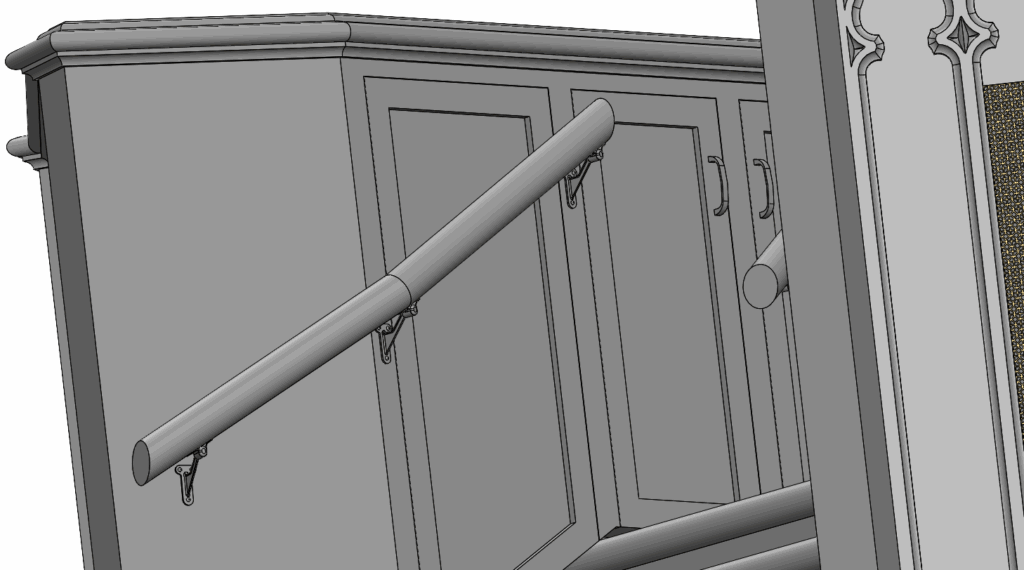
CAD Model of Handrail, Brackets & Door Handles
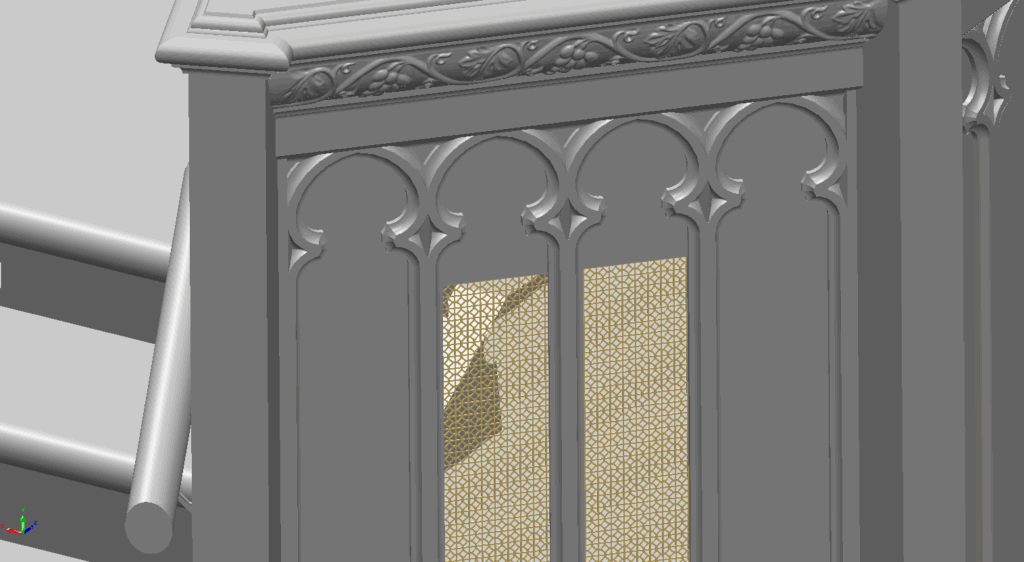
Grapevine Borders and Metal Mesh in CAD model of Church Altar
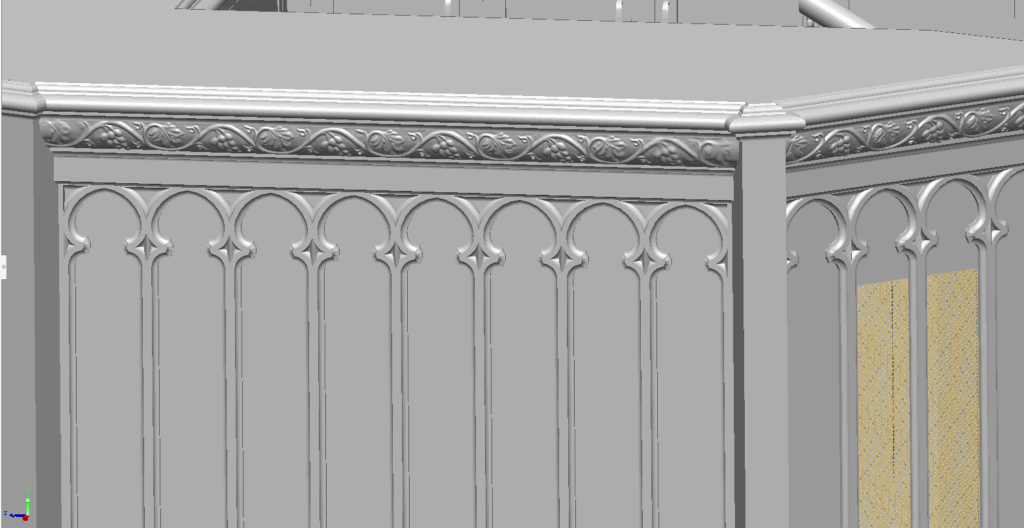
Grapevine Borders and Metal Mesh in CAD model of Church Altar
The Impact: Fast, Accurate, and Faithful Heritage Preservation
Through V3D Technologies’ 3D scanning and Scan-to-CAD expertise, the church’s altar was digitized in days instead of weeks—eliminating the need for time-consuming manual measurements and reducing the potential for human error.
Key benefits delivered:
- Time Efficiency: CAD model creation was accelerated from weeks to just a few days
- Design Fidelity: Every detail—from handcraft grapevine patterns to metal inlays—was preserved with precision
- Design Adaptability: The CAD model enabled seamless modifications while maintaining visual authenticity
Conclusion: Merging Tradition with Technology
This project highlights the powerful role that modern 3D scanning and reverse engineering can play in heritage preservation. V3D Technologies enabled the church to honor its historic altar by capturing it with extraordinary fidelity—while laying the groundwork for a functional, modern replacement that still speaks to its roots.
